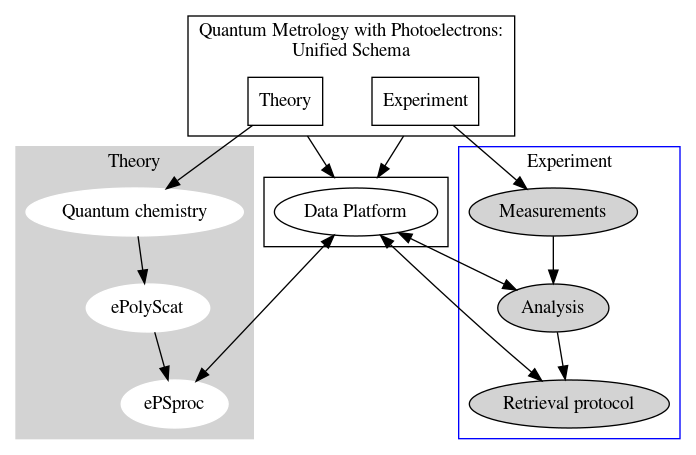
The title of this sub-forum is from the (my) book, Quantum Metrology with Photoelectrons. Why this title? Loosely speaking, this is an attempt to define a sub-category of photoelectron spectroscopy which focusses on (quantitative) quantum state determination/reconstruction (i.e. "complete" photoionization experiments in the traditional photoionization community, or quantum process/state tomography in the quantum info community). And, yes, there's also an attempt to be a bit trendy, but hopefully this is not totally cynical/justifiable in order to generate some cross-field appeal, since the core quantum physics and methodologies are somewhat general (and I have a lot to learn from other fields).
Please feel free to post below what you think about this title, general definition, and the science - I'm interested to know! (As a related side-note, see also the book Ultrafast Spectroscopy: Quantum information and wavepackets [3], which takes a similar approach to optical spectroscopy.)
For more info on these concepts and motivation, see this section on the ePSdata webpages, and this talk:
Abstract
Here's the abstract from the book. Members can also get some further information here.
Photoionization is an interferometric process, in which multiple paths can contribute to the final continuum photoelectron wavefunction. At the simplest level, interferences between different final angular momentum states are manifest in the energy and angle resolved photoelectron spectra: metrology schemes making use of these interferograms are thus phase-sensitive, and provide a powerful route to detailed understanding of photoionization. In these cases, the continuum wavefunction (and underlying scattering dynamics) can be characterised. At a more complex level, such measurements can also provide a powerful probe for other processes of interest, leading to a more general class of quantum metrology built on phase-sensitive photoelectron imaging. Since the turn of the century, the increasing availability of photoelectron imaging experiments, along with the increasing sophistication of experimental techniques, and the availability of computational resources for analysis and numerics, has allowed for significant developments in such photoelectron metrology.
Volume I covers the core physics of photoionization, including a range of computational examples. The material is presented as both reference and tutorial, and should appeal to readers of all levels. Volume II explores applications, and the development of quantum metrology schemes based on photoelectron measurements. The material is more technical, and will appeal more to the specialist reader.
References
[1] Hockett, P. (2018). Quantum Metrology with Photoelectrons, Volume 1 Foundations. IOP Publishing. https://doi.org/10.1088/978-1-6817-4684-5
[2] Hockett, P. (2018). Quantum Metrology with Photoelectrons, Volume 2 Applications and advances. IOP Publishing. https://doi.org/10.1088/978-1-6817-4688-3
[3] Yuen-Zhou, J., Krich, J. J., Kassal, I., Johnson, A. S., & Aspuru-Guzik, A. (2014). Ultrafast Spectroscopy: Quantum information and wavepackets. IOP Publishing. https://doi.org/10.1088/978-0-750-31062-8
